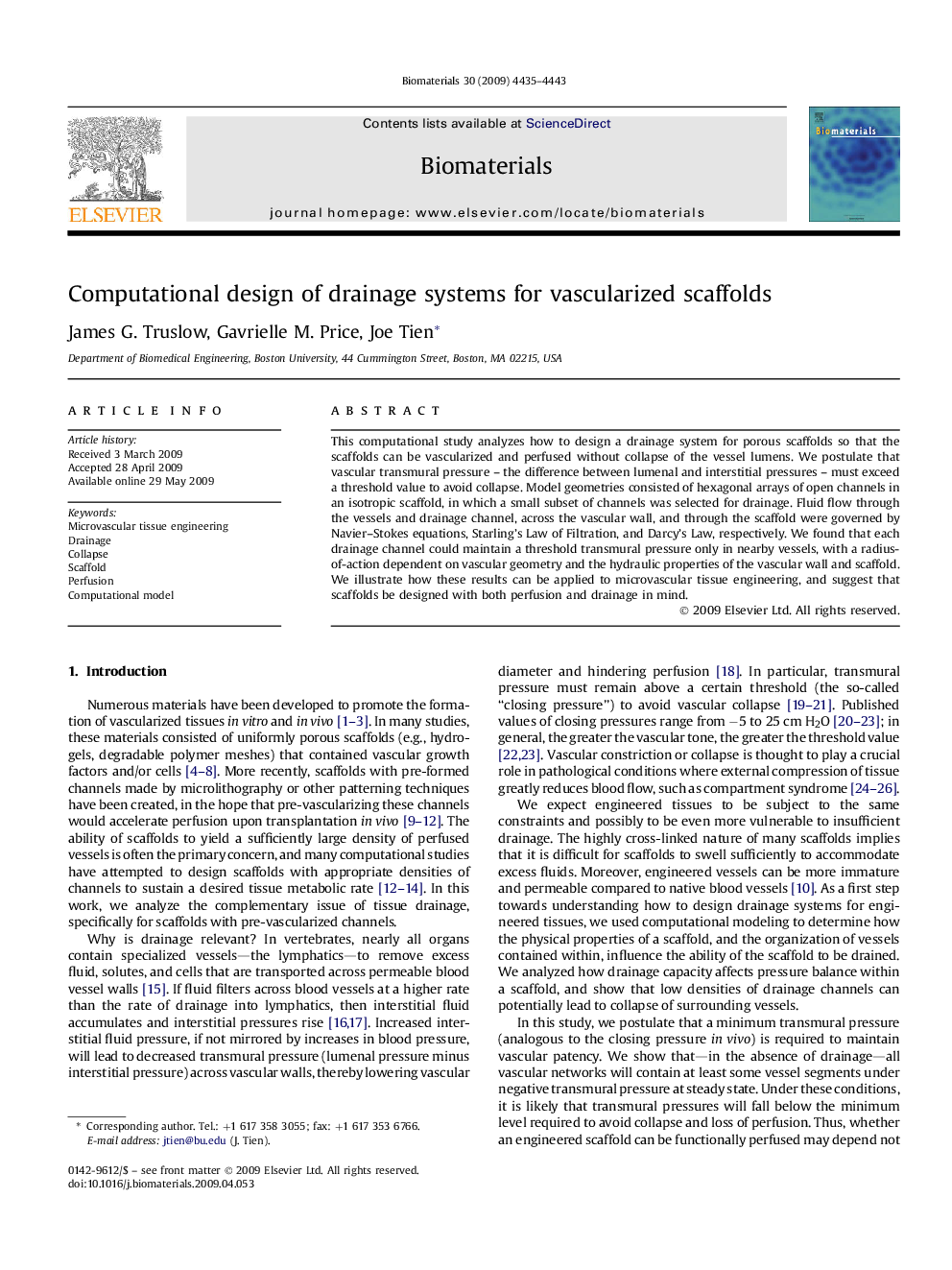| Article ID | Journal | Published Year | Pages | File Type |
|---|---|---|---|---|
| 10230043 | Biomaterials | 2009 | 9 Pages |
Abstract
This computational study analyzes how to design a drainage system for porous scaffolds so that the scaffolds can be vascularized and perfused without collapse of the vessel lumens. We postulate that vascular transmural pressure - the difference between lumenal and interstitial pressures - must exceed a threshold value to avoid collapse. Model geometries consisted of hexagonal arrays of open channels in an isotropic scaffold, in which a small subset of channels was selected for drainage. Fluid flow through the vessels and drainage channel, across the vascular wall, and through the scaffold were governed by Navier-Stokes equations, Starling's Law of Filtration, and Darcy's Law, respectively. We found that each drainage channel could maintain a threshold transmural pressure only in nearby vessels, with a radius-of-action dependent on vascular geometry and the hydraulic properties of the vascular wall and scaffold. We illustrate how these results can be applied to microvascular tissue engineering, and suggest that scaffolds be designed with both perfusion and drainage in mind.
Related Topics
Physical Sciences and Engineering
Chemical Engineering
Bioengineering
Authors
James G. Truslow, Gavrielle M. Price, Joe Tien,
